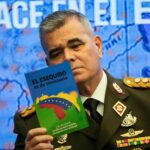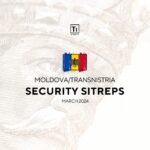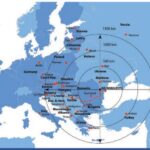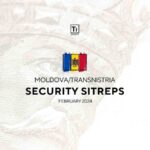SITUATION REPORT – The following assessment outlines the Turkish proposals for a Raqqa offensive, made by Akar, the Turkish Joint Chief of Staff to Dunford, the American counter-part. This SitRep contextualizes the situation in Raqqa Governorate and also clarifies the already ongoing “Wrath of the Euphrates” Operation spearheaded by the Syrian Democratic Forces (SDF) and the Kurdish militia, YPG. In addition, this assessment preemptively estimates potential “black swan”-type of scenarios that could occur from the Syrian, Israeli or Kurdish camp.
Context
Raqqa is the self-proclaimed capital of the “Islamic State of Iraq and Syria” (ISIS) terror organization. The city was liberated in early March 2013 after the Rebels ousted the Syrian Arab Army (SAA) from the city, creating a vacuum filled by the opportunist and Al-Qaeda affiliate Jabhat al-Nusra (later Jabaht al Fateh; now Tahrir al-Sham). Raqqa was the first major city to fall under the Rebellion[1].
Jabhat al-Nusra was formed by Al-Jolani (Golani) and other emissaries sent by Abu Bakr Al-Baghdadi, as a Syrian franchise of the “Islamic State of Iraq” or ISI (ex-Al-Qaeda in Iraq). With this move, ISI grew more ambitious and quickly renounced its connection with Al-Qaeda, thereby establishing its independence. An action that Jabhat al-Nusra disapproved, in effect, they renounced their own lineage to the “Islamic State of Iraq” (ISIS, remaining faithful to Al-Qaeda “central”, based in Yemen. This prompted al-Qaeda chief Ayman al-Zawahiri to intervene, sending a message to the two groups that was aired on al-Jazeera on June 9th 2013, ordering them to maintain their organization as they are and delay the issue of integration until a later time[2].
These series of inter-Jihadi tensions escalated in fierce fights between Jabhat al-Nusra (that dominated the Rebellion due to their numbers and capabilities) and ISI. In the end, after several non-aggression agreements Jabhat al-Nusra retreated from Raqqa, and began losing a great number of fighters, defecting to ISI[3]. Nevertheless, mass defections to ISI were a rising trend among the entire Rebellion.

ISIS in Raqqa PHOTOGRAPH BY STRINGER / REUTERS / LANDOV
As a consequence ISI managed to replicate another Syrian franchise, yet this time, as a directly centralized structure. With internal political disputes within the Rebellion regarding the city’s management (two competing City councils were established), ISI, now ISIS, managed to assert itself in a clandestine and soft manner within the city. Shortly after, key political leaders and Rebel commanders were assassinated, while alliances with local imams were forged[4]. And with mass-defections from Rebel groups to ISIS, the total take-over shortly followed.
Raqqa has remained their “Capital” ever since. (more about Raqqa and Operation “Wrath of Euphrates” here)
Operation Wrath of the Euphrates
The US-led Coalition “Inherent Resolve” and their ground allies, the Syrian Democratic Forces (SDF) and the YPG (Syrian Kurdish militia) have launched since early-November 2016 an offensive of liberating the ISIS self-proclaimed capital of Raqqa[5] – Operation “Wrath of Euphrates” (not to be confused with the Turkish operation “Euphrates Shield”).
The Syrian Democratic Forces (SDF) is a multiethnic Pentagon-formed group in northern Syria that encompasses Kurdish, Arab, Assyrian and Turkmen groups[6]. Their political command is based in Qamishli, and the group serves as the military force of the newly established Federation of Northern Syria. But Turkey has quickly seen through the “multiethnic disguise” and realized that the Kurdish fighters dominate the numbers and that the whole leadership is exclusively comprised of officers of YPG[7] – the Syrian Kurdish militia affiliated with the PKK terror organization.

Syrian Democratic Forces (SDF) commanders, with the U.S.-backed Kurdish rebel fighters inside Syria, attend a news conference in Ain Issa, Raqqa Governorate on November 6, 2016. REUTERS/Rodi Said
The SDF have officially announced the operation through a press conference in November 2016 that also urged Turkey to “stay out of Syrian affairs” and that a deal was struck between the SDF and the US to keep Turkey out of the Raqqa assault. By early-November, when the operation started, the Turkish Armed Forces (TSK) were already in northern Syria, in Aleppo Governorate making ground towards Al-Bab. Their intervention curbed SDF and YPG ambitions towards uniting the Kurdish cantons. In effect, Washington re-purposed the SDF to commence the assault on Raqqa. Ankara disagreed again, and called for a complete exclusion of Kurdish militias from any offensive to ISIS self-proclaimed capital[8].
Withdrawing the responsibility of liberating Raqqa from the YPG-led SDF would diminish the Kurdish role in the fight against ISIS and subsequently reduce their claims and position. Furthermore, it would also serve as a guaranty that the YPG will not try to impose a puppet administration in the city council, as the Turks accused them of doing in Manbij.
While the proposal of multi-ethnic co-federalism is the ideal one in northern Syria, the evidently dominance by Kurdish elements does legitimately raises the question of whether the Patriotic Union Party (PYD and YPG) would hijack the structure and disregards to Arab, Turkmen and Turkish pleads.
State of the Offensive
However, with the Turkish Armed Forces (TSK) present in northern Syria since late-August 2016, their movements have been considerably limited. Turkey denied any more advancement west of the Euphrates after the SDF planned to liberate Al-Bab and Jarabulus after their victory in Manbij against ISIS. The Pentagon wanted to prevent a systemic Kurdish-Turkish fight, in effect they coordinate the SDF to take the route of Al-Raqqa (Ar-Rakkah).
As of February 19th 2017, The SDF and YPG are just 10 km north and 30 west of Raqqa, although the offensive moves slow, ISIS is preparing for a major shift to the Syrian Arab Army-controlled Deir-Ezzor (Dayr al-Zawr) – under a full assault by ISIS forces that detached troops from Raqqa, Palmyra and Iraq to take the city[9]. The Syrian Democratic Forces (SDF) and the YPG are currently ending the 3rd phase of the operation which involves isolating the city from its rural outskirts. The operational value of an encirclement is that of cutting supply lines for ISIS fighters, and of blocking waves of eventual reinforcements, thus preparing the ground for a complete siege of the urban elements.
The Turkish Armed Forces and their Rebel allies are currently storming the city of Al-Bab where a stiff ISIS resistance prolongs the battle.
Military Diplomacy: The Turkish-American plans for Raqqa
General Joseph Dunford, the Joint Chief of Staff of the United States engaged last year in a tour of military diplomacy with key actors in the Syrian Civil War. He met his Turkish counter-part, General Hulusi Akar, at the Incirlik joint base where they discussed the war in Syria[10]. There, two proposals were outlined by the Turkish Generals starting from one immovable foundation:
- Turkish and U.S. Special Forces to spearhead and coordinate the Syrian rebels to storm Raqqa; with full air support from the Turkish-American combo. The Operation would not involve the YPG or the SDF. From here, there are two scenarios to act this plan.
- The most suitable and preferable is to launch the operation from Turkey directly into Raqqa Governorate, through the border city of Tel Abbyad. From the border there are 100 km to Raqqa City. Such a plan would require the United States to convince their allies, the Kurdish militia YPG and the SDF to grant the Turkey-backed forces a 20-kilometre (12-mile)-wide strip through their territory – A difficult and uneasy thing to ask for; especially as the SDF is feeling more and more betrayed by their backers.
- A second scenario would involve capturing the city of al-Bab from ISIS and advancing through exclusively ISIS-held territory that stretch 180 km to Raqqa. The route would go to Al-Bab south between the two lakes. It took Turkey’s Operation Euphrates Shield almost four months to break the ISIS grip on Al-Bab by imposing a heavy siege and dropping tons of ordinance. While having entered the city since February 7th they’ve already lost ground, notably the southern roundabout connecting Tadef and the northern entrance.
While this second scenario would not be in direct divergence with the Kurdish issue, and would save Washington a headache, it would be unadvisable and counter-productive. Such a prolonged roadmap to Raqqa would only come to the benefit to ISIS which in that given time, could already abandon their capital or strengthen its defense, and move most of its leadership in Deir-Ezzor.

Scenario A would certainly be the most efficient, time-saving and logistical-secure path of storming Raqqa. But in that same time, would mark a major rift in the US-Kurdish cooperation which was constant and stable throughout the Syrian Civil War. Subsequently it would reinforce Turkey’s position and grip over the northern Syrian territories. Nevertheless, it would secure a 2017 window for storming the self-proclaimed capital.
Scenario B would advert most of the US-Kurdish tensions that the first scenario would have created, but it would be logistical nightmare and a costly one. Having a 180 km long road ahead with a strong ISIS presence, that would be liberated by the weakened Rebels, could mean pushing the Raqqa assault to 2018.
Worth mentioning is also that General Dunford met with Gerasimov, his Russian counter-part, in Azerbaijan’s capital Baku, to discuss military issues[11]. A close coordination is needed in order to avoid incidents, as Russian and American fighter jets fly and engage in a common airspace. Synchronized with Secretary of State, Rex Tillerson’s meeting with Sergey Lavrov. Moreover, US Secretary of Defense General James Mattis has said he did not see possible military collaboration with Russia now[12].
Dictate of Manbij
Decision makers in Ankara have repeatedly announced that after Al-Bab (whenever that will be) the priority of their operation would be Manbij[13] and Raqqa. Yet, Manbij is nowhere on the plans presented to General Dunford – not publicly know, of course. Although the Turks made that plan clear by frequently shelling Manbij through the past months. The Turkish security interest remains firm, all Kurdish forces need to retreat east of the Euphrates. Such a call was also backed by the United States through Joe Biden in late 2016. It is the only palpable guarantee of a Turkish-protectorate buffer zone. The liberation of Manbij could come as a dictate from Turkey, supported by the United States, and not through a direct military battle with the SDF or YPG. However, Manbij can play a conditioning role for the future of US-Turkish cooperation in Raqqa.
The Turkish Defense Minister also confirms my theory of “a dictate”: “We are working with the U.S. on the withdrawal of the YPG from Manbij by the time the al-Bab operation is completed,” Isik said.
Post-Conflict Raqqa: The decisive field of fight
Besides the logistical argument, Turkey makes the case of the decisive post-conflict reconstruction in Raqqa. Similar to the Nineveh governorate in Iraq, Raqqa has a multi-ethnic and diverse religious composition, on which the “Islamic State” has played in. A Kurdish liberation of Raqqa could spark similar consequences as the Shi’a liberation of the Anbar region – surge in sectarian tensions and the discern of a “Kurdish occupation/ land-grab”. While the sectarian card is almost all the time desperately exaggerated, it remains a decisive factor. The Free Syrian Army and their Ahrar ash-Sham (if would part-take) are overwhelmingly Sunni Arab. Societal-wise, it would be pragmatic to insert familiar and majority-favorable elements. The City Council is the tool of authority used in Northern Syria; Turkey accused the SDF of wanting to impose YPG-friendly elements, that would serve as facilitators of Kurdish dominance in Northern Syria, in both Jarabulus and Al-Bab. Turkey’s interest is to assert its own Arab Sunni assets to control strategic crossroads or locations, as Al-Bab, Jarabulus, Raqqa, that would counter-balance the Kurdish ambitions. But in the case of the Arab Sunni majority city of Raqqa, Turkey’s security interests harmonizes with the post-conflict societal imperatives. When the enemy leaves Raqqa, the strategic engagement would shift to a population-centered counter-insurgency operation (COIN), which mandates an comprehensive understanding of the in-field/local reality, tendencies and forging of a administrative order tailored to it. At least in theory, this is the most sustainable modus operandi.
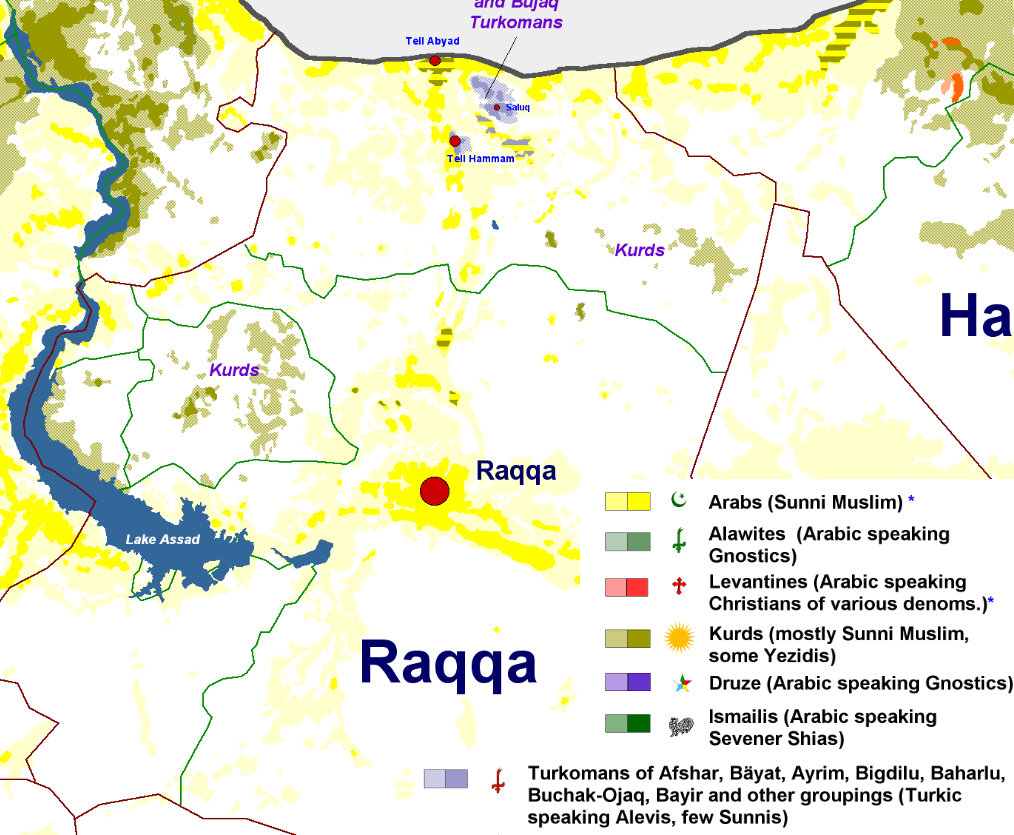
Turkey’s Minister of Defense acknowledges Washington’s new amenable position: “The new U.S. administration has a different approach to the issue. They are not insisting anymore that the operation should definitely be carried out with the YPG. They haven’t yet made up their minds,” Minister Isik said.
Black Swan: Continuing with the Kurdish way
There is no room for a Kurdish-Turkish compromise for the Raqqa assault, as they both put it to Washington: “It’s us or them!”. Consequently an abrupt decision needs to be taken. If the Turkish pleads are ignored, the SDF-led Raqqa assault could be sabotaged by a Turkish attack on Manbij and east of the Euphrates.
The Kurds on the other hand have no military leverage but they do have their glass full of compromises made (under US pressure) towards the Turkish wishes. The YPG is the military wing of The Patriotic Union Party (PYD), and they party itself have been developing a strong political tie with Russia which translated on the battlefield. Frequently they have benefited from several air strikes of the Russian Air Force[14]. The Kurdish Syrian party has also opened a permanent mission in Moscow[15] – their first European diplomatic mission. The office is located in the same building with a business association inaugurated by HDP[16]’s co-Chairman.
The Kurdish leverage is that they could very well become an asset for the Kremlin. Furthermore eliminating the YPG and SDF from the ongoing offensive could likely degrade the quality of the military effort towards Raqqa. Although a post-war reconstruction that would be coordinated by Kurdish forces could possibly create irreconcilable tensions between the majority Arab population and the YPG/SDF authority. In contrast, Turkey’s FSA bid is fully compatible with the societal reality in the field.

Map of Rojava Kurdistan hanging on the wall in the office for Rojava Administration (Federation of Northern Syria) in Moscow.
Black Swan: The Syrian factor
Assad’s Syrian Arab Army (SAA) has a presence just south of the Turkish-Rebel assault on Al-Bab. They have tried to breach and capture the small town of Tadef, but momentarily suffer a tactical set-back. But would the Syrians launch their own assault to liberate Raqqa?
The logic behind such a move would be to prevent a Turkish liberation of the city and thereby a “safe zone” expansion – which Damascus perceives as a “violation of its sovereignty”[17].
The Syrian Arab Army (SAA) had a presence in Raqqa until 2014, when following the fall of Menagh Air Base (2013), the 17th Reserve Division’s headquarters was captured by ISIS.

But the Syrians and their Loyalists coalition (Iran, Hezbollah, Russia) had little interest in defeating ISIS. Their resources were pointed against the only groups that could politically challenge the regime – the Rebels. They made tactical retreats, as was the case of Palmyra, letting it fall in ISIS hands, in order to concentrate more troops against Rebel groups near Damascus, Idlib or Aleppo.
The Loyalists had a failed Raqqa offensive in mid-2016[18]. After a two week battle, a series of ISIS counterattacks caused the Syrian Army to withdraw from the positions it had retaken in western Raqqa, all the way to southeastern Aleppo governorate[19]. Many experts have weighted in that failed operation and actually believe that the Raqqa offensive was actually a PR stunt than an actual, genuine military intention. The purpose of the PR stunt was to combat allegations that the Syrians are avoiding to fight ISIS.
But now that the Opposition suffered its major setback, the loss of Aleppo, and that ISIS has launched a mass assault on Deir-Ezzor, Damascus could explore other options.
Palmyra – Deir-Ezzor Affair
Deir-Ezzor (Dayr al-Zawr) is located near the Iraqi border and is a Regime-held enclave in a vast desert controlled by ISIS. Thereby they lack a ground connection for supplies and logistics with other Regime-controlled locations. The only way to resupply the troops in Deir-Ezzor is by air and through the local airfield. Deir-Ezzor is the “Islamic State’s” fall-back plan from Raqqa and Mosul. They dispatched troops from Iraqi’s Anbar region and from Raqqa Governorate to spearhead the assault. Yet, the Syrian Arab Army (SAA) is holding-in; but desperately needs back-up. (more about Deir-Ezzor).
A land connection can only be established by liberating Palmya and by controlling the M20 highway all the way to As Sukhnah and beyond to Deir-Ezzor. That is a 200 km road through an open desert controlled by ISIS; such an endeavor would be too troublesome for a weary SAA and their external backers, worried more about Rebel footholds in the west. Fights are ongoing in Palmyra around the T-4 airbase, but the latest update, dated February 21, 2017, informs that following a stunning blitz offensive, ISIS has ousted the Loyalists and retook Palmyra. In addition, the “Islamic State” also seized Palmyra Airbase, the Hayyan gas field, Al-Dawa village, and the Al-Bayarat area following other territorial gains over the past 48 hours. This development further deepens any possibility of relieving the governmental soldiers under siege in Deir-Ezzor. In other words, those soldiers are on their own.
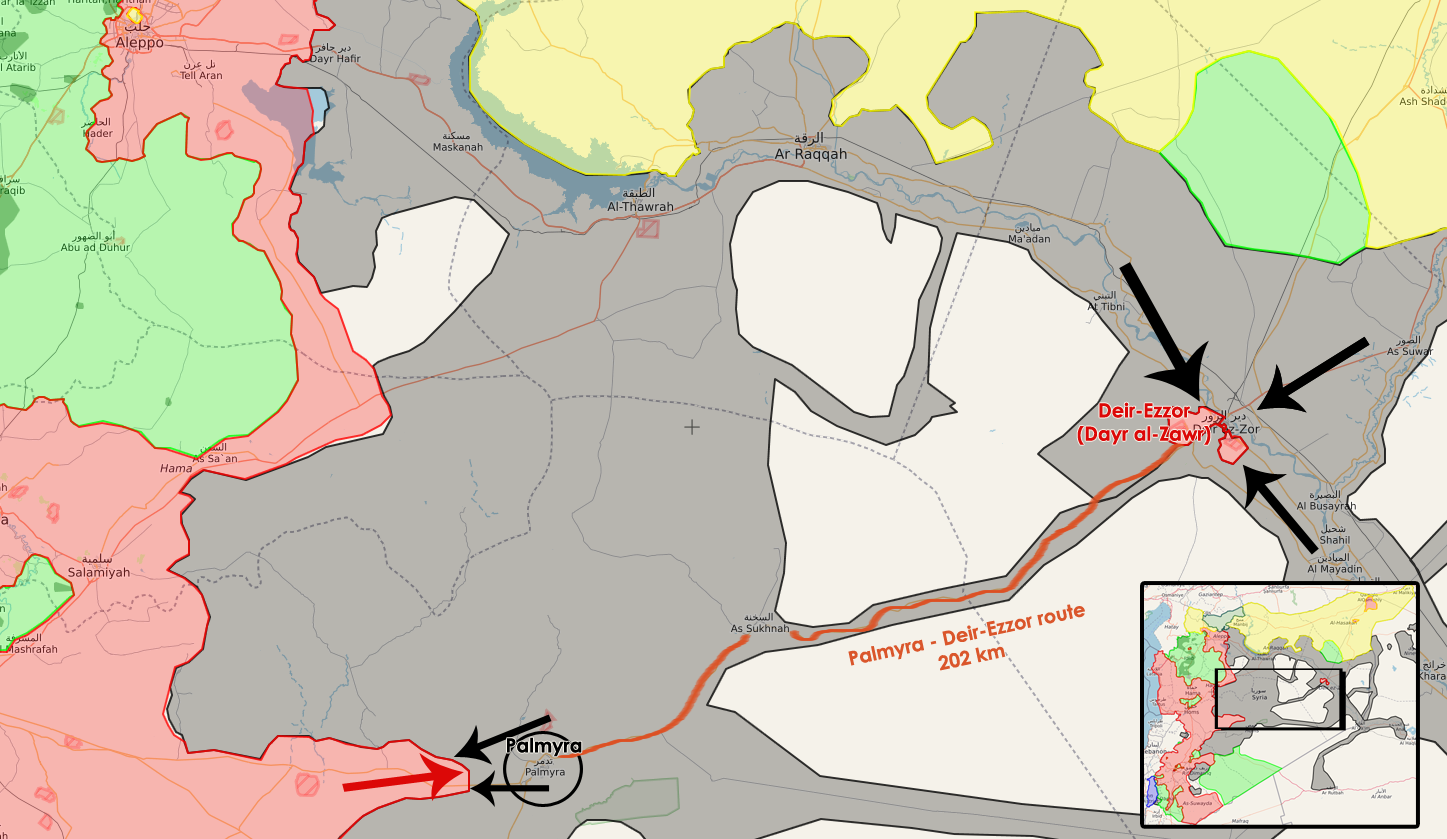
Priorities
Currently, Regime forces and Russian, Iranian assets are fighting ISIS in western Palmyra; with little but steady progress. It is clearly that after liberating Aleppo, the regime faced with a dilemma, a crossroads of “where-to next”. Their immediate priorities looked like this: 1.securing rural Damascus (Wadi Baraada, Ghouta, Daraa etc.) 2. Preparing an Idlib offensive, and then 3.copping with the Southern Front; a strategic vector that was long ignored by the media. The southern front comprises of Al-Qaeda, salafists and ISIS presence, bordering an eager and anxious Israel on the Golan Heights and the Kingdom of Jordan, that harbors Rebels and US-British forces.
Evidently the ISIS assault on Deir-Ezzor forced the Loyalists to rethink their priorities and craft a new post-Aleppo strategy. After all, the war has reached a decisive yet ambiguous level, the post-Aleppo period, where the Rebels are fighting for survival, more than anything else. Consequently, after the Deir-Ezzor assault, the Damascus-Moscow-Tehran Axis could actually prioritize the fight against ISIS above anything else. Mostly if it would deny the Turkish protectorate developed in northern Syria. Yet the power-gambling is unclear in the Loyalist camp. A possible power struggle between the Russians and Iranians is undergoing; Moscow comprehends the danger and regional implications of a more asserted Iran in the Levant. Israel is anxiously waiting on the Golan Heights for ISIS and Salafist groups to be removed from the Southern Front, while Hezbollah and other Shia’s proxies to take their place. That would be the biggest mistake Damascus could ever make. Such a move would probably trigger an Israeli intervention that would be decisively costly for the Syrian Arab Army (SAA). An escalation from the air raids that the Israeli Air Force has already launched to destroy weapons transfers or caches in Damascus.
The Black Swan, the unexpected factor is that the Loyalists could bring the fight against ISIS in Palmyra all the way to Deir-Ezzor and to Raqqa from Al-Bab. Yet, the chances of such a undertaking are almost non-existent, to say at least; the costs would not be worth the burden. For Damascus, it would make no sense to save a Regime-held city, isolated in eastern Syria. They will preserve and use resources to combat the Rebels, exclusively located in the western half of the country. But as with any “black swans” it’s better to foresee them, than to be surprised by them.
Breach for Impact:
Intelligence suggests that ISIS has already began transferring political and military command centers to other, dispersed locations. One of which is Al-Qa’im district in Anbar, Iraq – Hashd militia informs. Moreover, ISIS fighters have started to seal off several entry points in the city. The entrance in the north-western district of Andalus is an example. The jihadis used concrete pipes as roadblocks.
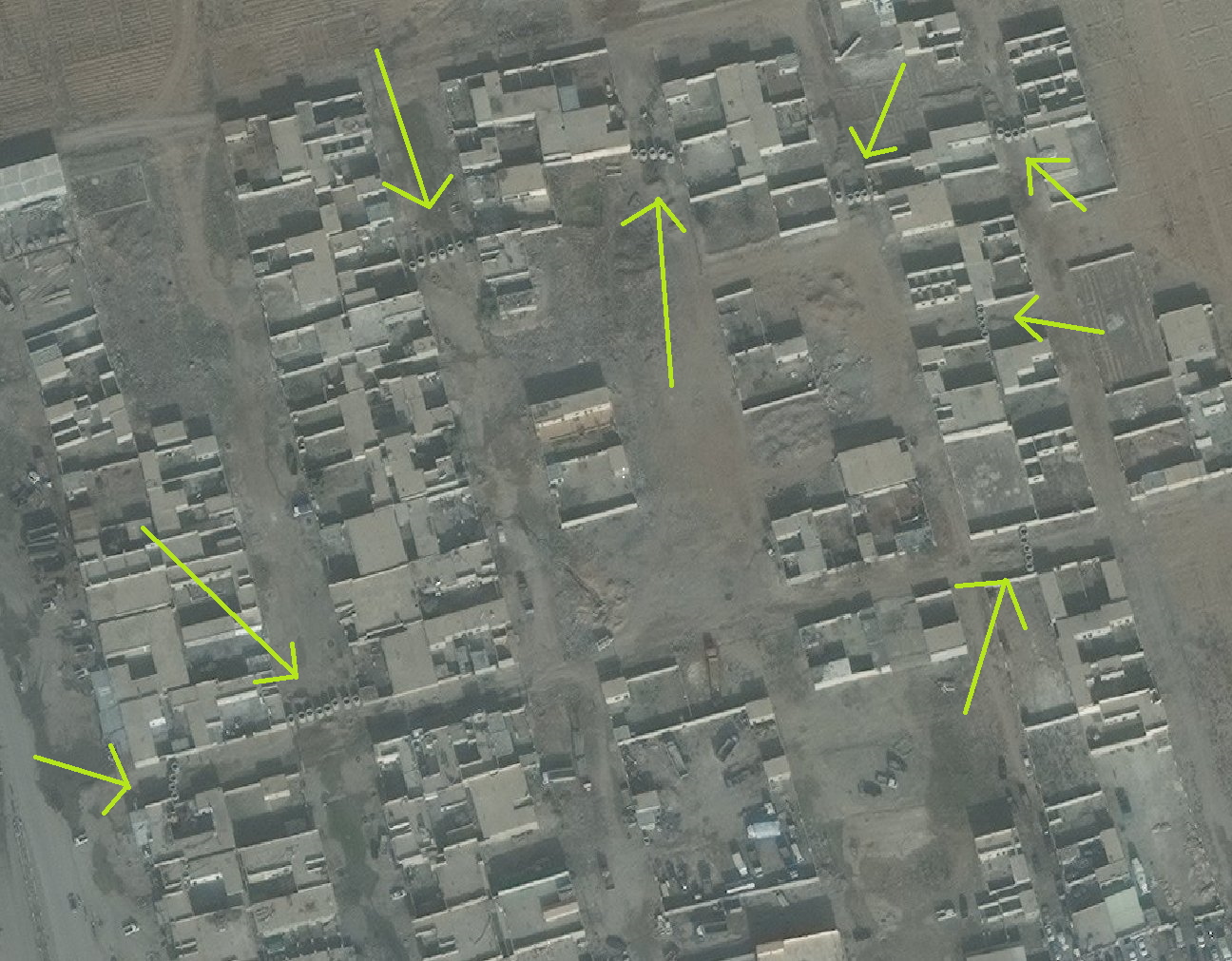
The northwestern neighborhood of Andalus in Raqqa, enforced with concrete tubes.
Conclusive Judgments
The Turkish proposal for taking Raqqa, particularly the scenario involving an intervention from its border through SDF/YPG territory is the foremost pragmatic and efficient approach. Ideally, a SDF/YPG involvement in the operation would be a tactical paramount. Still, such a hypothesis is not only unrealistic but also irrational. Therefore, the costs and effects on the further Kurdish-US cooperation will be proportionate. However, Washington hasn’t called off the YPG/SDF-led Operation “Wrath of Euphrates”, which signals that the Kurdish way is still on the table. But with the strong Turkish argument of a compatible post-war reconstruction in Raqqa, led by Arabs from the FSA, not by Kurds from the SDF/YPG, the decision is as difficult as possible. But ultimately the United States knows that prolonging the pivotal Turkish-Kurdish dance has the potential to escalate in a full war in northern Syria that would indirectly benefit ISIS. Consequently, clear and cut decision will be taken.
The Syrian Arab Army (SAA) and its Iranian, Russian backers are also weighting-in different new strategies. Liberating rural Damascus is neither a challenging nor a resource-demanding endeavor. They face isolated and weary opponents, many of whom even preferred to surrender than to fight. But with ISIS challenging their own, remote and fatigued forces, in Deir-Ezzor, a call for a paradigm change occurred.
With Loyalists realizing that they share too a battlefield with ISIS, the chances of launching their own Raqqa ambition are modest; yet they could combat ISIS in other parts, such as Palmyra (ongoing) and the Southern Front. In that circumstance they should know better than letting Iran provoke or escalate the tensions with the Israelis in the Golan Heights. A balancing policy that is attempted by the Kremlin, consequently bringing the Loyalist camp in somewhat of a power-struggle over who should dictate the war strategies. However, there are many topics on which there is a consensus, like for example: maintaining the integrity of the Syrian Arab Republic. An objective undermined by the Turkish presence in Aleppo Governorate and their intensions of liberating Raqqa. This concludes the case of an antagonistic dynamic that is ambiguous of how the Loyalists will cope with. Empirical judgments led me to believe that a Russian-US mutual recognition of influence/interests over certain territories in Syria is on the table.
Conclusively, the Syrian War has entered a post-Aleppo phase that opened the door to new circumstances. The case and context for the liberation of Raqqa, coming from all the competing camps plainly signals that the end is nigh. The assault is expected to commence this year.
Bibliography
[1] “Activists: Syrian Regime Bombs Rebel-Held City.” https://www.usatoday.com/story/news/world/2013/03/10/syrians-bomb-northern-raqqa/1976777/.
[2] “Golani vs. Baghdadi: Al-Qaeda’s Internal War in Syria | Al Akhbar English.”. https://english.al-akhbar.com/node/16689.
[3] “The Mysterious Fall of Raqqa, Syria’s Kandahar | Al Akhbar English.” https://english.al-akhbar.com/node/17550.
[4] ibidem
[5] “Operation ‘Wrath of Euphrates’ to Liberate Raqqa From Islamic State Begins – KurdishQuestion.com.” https://kurdishquestion.com/article/3588-operation-039-wrath-of-euphrates-039-to-liberate-raqqa-from-islamic-state-begins.
[6] “Syrian Democratic Forces (SDF).” https://syriancivilwarmap.com/syrian-democratic-forces/.
[7] Institute for the Study of War “The Road to ar-Raqqah: Background on Syrian Democratic Forces”, https://www.understandingwar.org/sites/default/files/The%20Road%20to%20ar-Raqqah%20ID.pdf
[8] “Turkey: Kurdish YPG Must Not Lead Offensive against ISIS in Syria’s Raqqa – Turkey – Haaretz.” https://www.haaretz.com/middle-east-news/turkey/1.741017.
[9] “ISIS Mass Exodus from Raqqa to Deir Ezzor – ASHARQ AL-AWSAT English.” https://english.aawsat.com/2017/01/article55366023/isis-mass-exodus-raqqa-deir-ezzor.
[10] “US in ‘close Contact’ with Turkey over Raqqa Assault.” https://ara.tv/jgpqf.
[11] “Aliyev Holds Talks With U.S. Joint Chiefs Of Staff Chairman In Baku.” https://www.rferl.org/a/azerbaijan-us-joint-chiefs-dunford-meets-aliyev-russian-gerasimov/28312959.html.
[12] “Trump’s Defense Chief Sees No Military Collaboration with Russia | Reuters.” https://www.reuters.com/article/us-usa-russia-mattis-idUSKBN15V1N9.
[13] “After Al-Bab Liberation, next Target Is Manbij : Erdoğan – Middle East Observer.” https://www.middleeastobserver.org/2017/02/18/after-al-bab-liberation-next-target-is-manbij-erdogan/.
[14] “Syrian Kurds Backed by Russian Airstrikes Advance on Syrian Airb.” https://www.rudaw.net/english/middleeast/syria/10022016.
[15] “PYD Opens Office in Moscow, Inauguration Attended by HDP Deputy – Daily Sabah.” 2017. https://www.dailysabah.com/diplomacy/2016/02/11/pyd-opens-office-in-moscow-inauguration-attended-by-hdp-deputy.
[16] HDP is the largest Kurdish Party in Turkey, frequently accused of working with YPG/PYD and PKK
[17] “‘Blatant Violation of Sovereignty’: Damascus Condemns Turkish Operation in Syria.” https://sputniknews.com/middleeast/201608241044586579-syria-turkey-troops-jarablus/.
[18] Adra, Zen. “Breaking: SAA Begins Military Operation to Recapture ISIS-Held Raqqa + [Photos].” AMN – Al-Masdar News | المصدر نيوز, June 2, 2016. https://www.almasdarnews.com/article/breaking-saa-begins-military-operation-recapture-isis-held-raqqa/.
[19] Fadel, Leith. “Disastrous Turn of Events Force the Syrian Army to Withdraw from West Raqqa.” AMN – Al-Masdar News | المصدر نيوز, June 22, 2016. https://www.almasdarnews.com/article/disastrous-turn-events-force-syrian-army-withdraw-west-raqqa/.
Founder of T-Intelligence. OSINT analyst & instructor, with experience in defense intelligence (private sector), armed conflicts, and geopolitical flashpoints.

